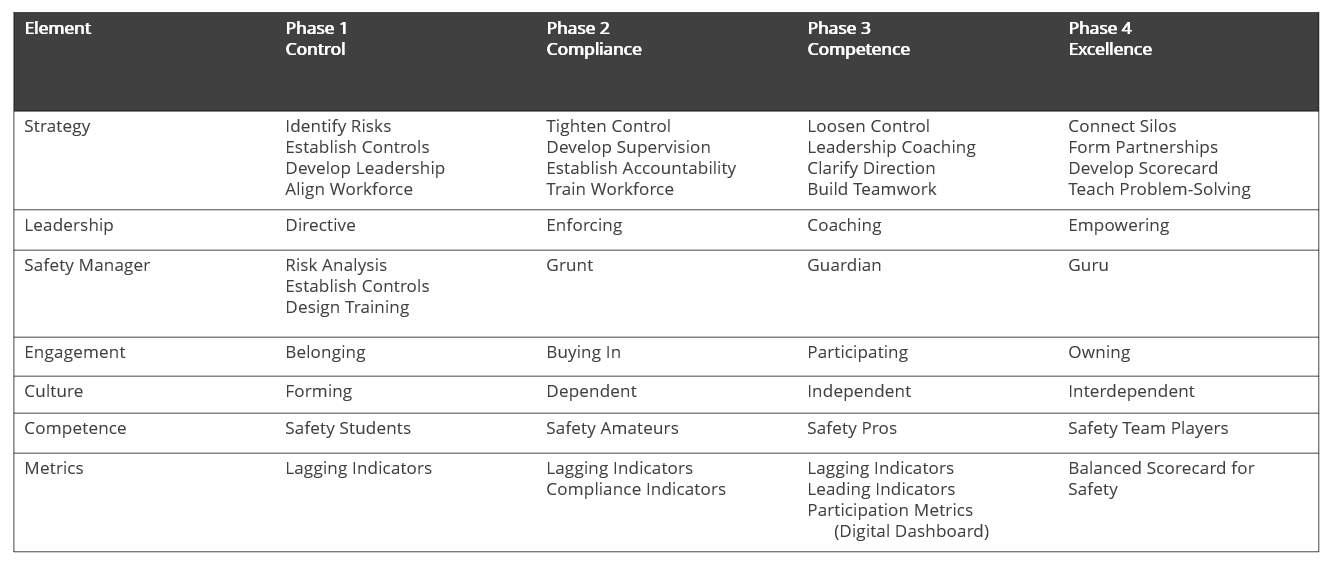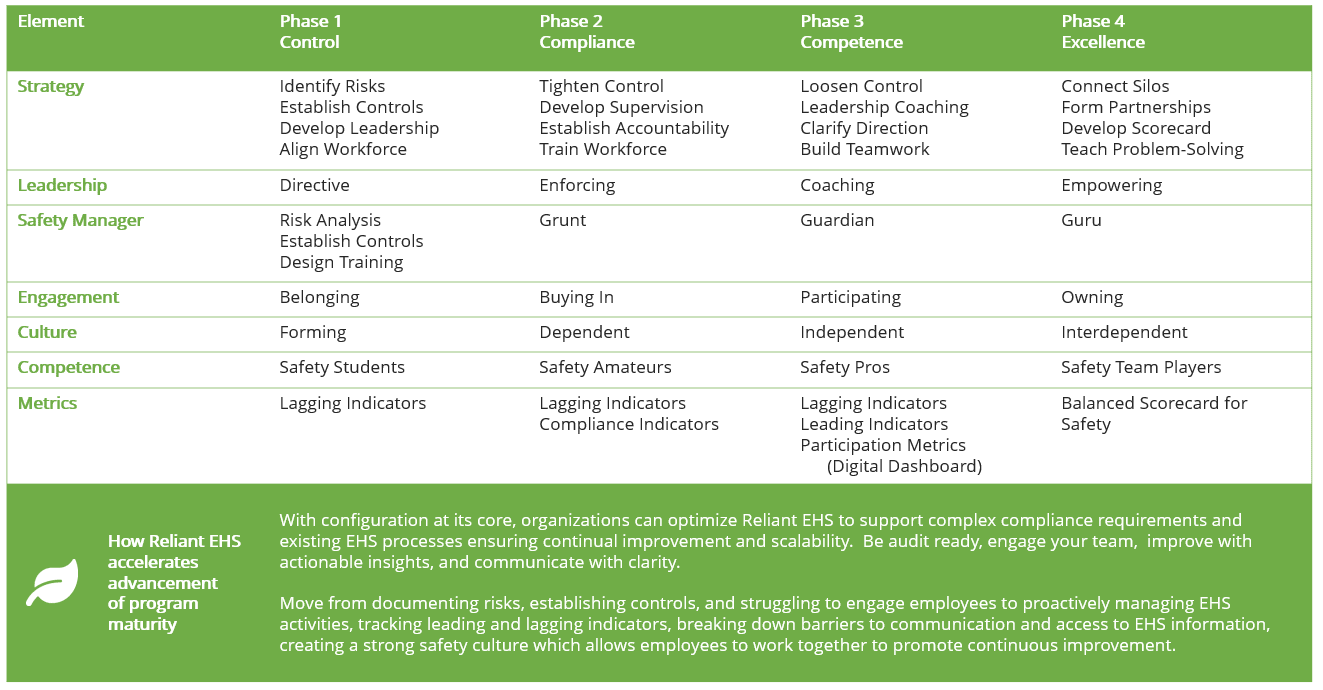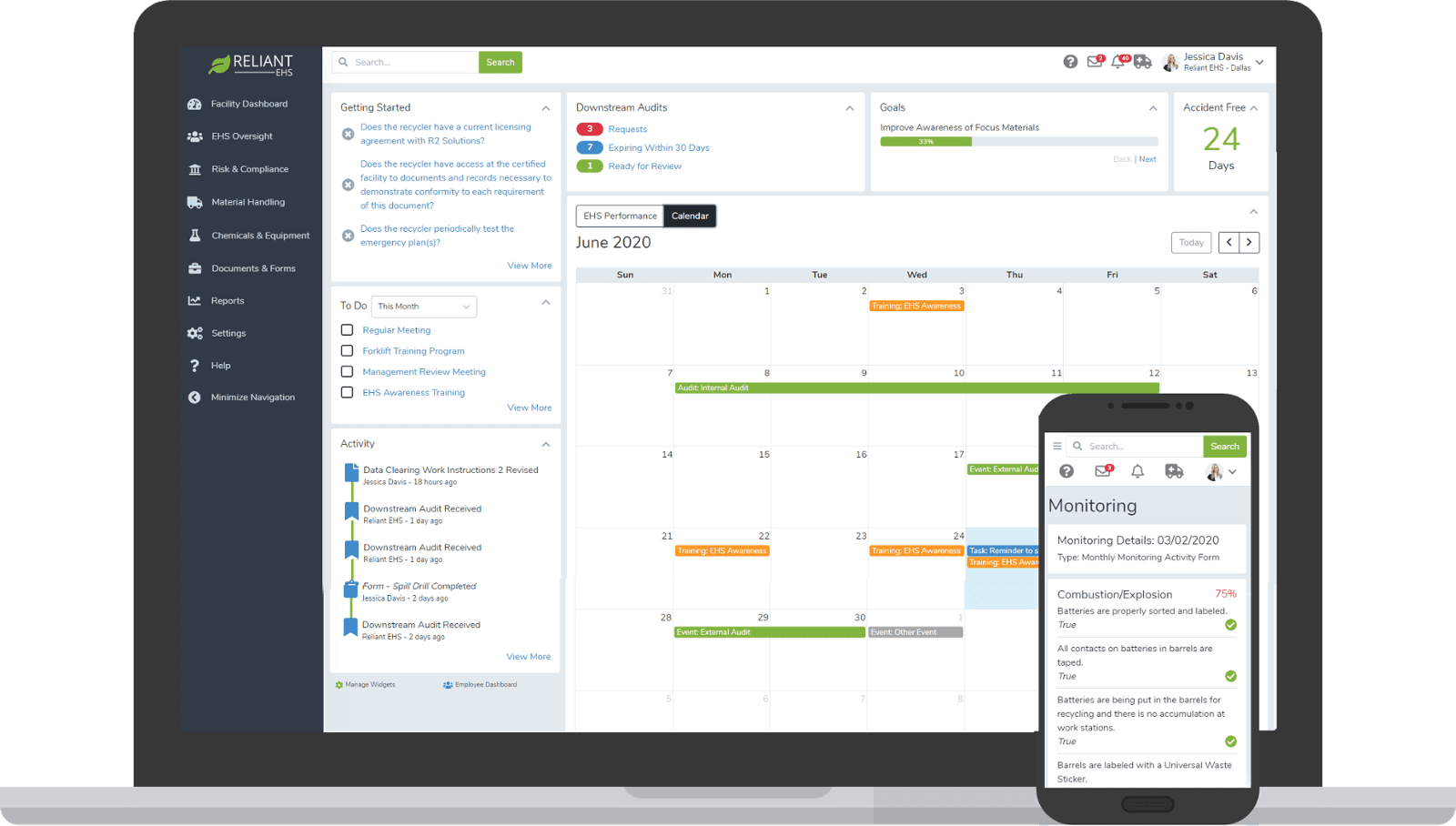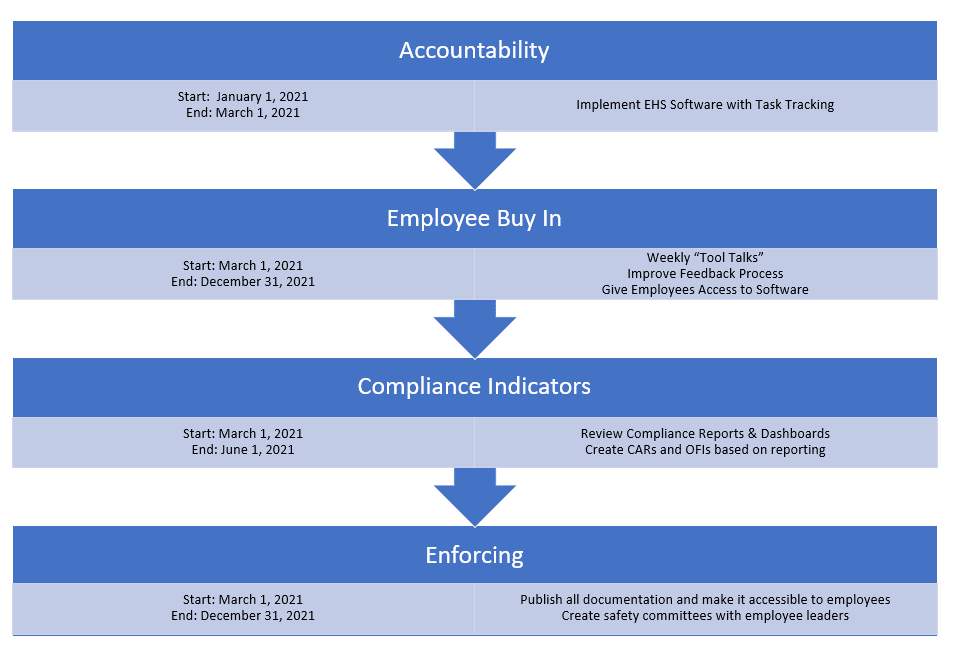As a compliance professional, you're likely familiar with the quote "Anything that can be measured can be improved.".
We document, measure, document some more and are constantly striving for improvement. In fact, it is a core tenant of the model most of us follow - the Plan-Do-Check-Act Model for Continuous Improvement, but how is our overall EHS performance actually measured?
- How do we know how our programs are really performing?
- How do we design a roadmap and strategy for improvement that results in program excellence?
- How can we empower employees to actually WANT to actively participate in EHS initiatives?
- How do we move from reacting to what's happening in our workplaces to predicting, preventing, and creating an employee driven safety culture?
- Strategy
- Leadership
- Employee Engagement
- Culture
And two minor disciplines:
- The Role of Safety Professionals
- Metrics

Before you can begin the process of creating your roadmap, however, you must take a long, hard look at the current state of your program to identify your current state. What phase is your program currently in? - It is critical to be completely honest with yourself during your analysis in order to achieve a realistic roadmap. Looking at your program through an idealistic lens will result in creating a roadmap where your first step is already leaps ahead of your current position and does not set you up for success.
Once you've identified your current phase, the next step is to do a gap analysis between your current state and the next phase - the easiest way to do this is to simply highlight what you are missing from the next phase.For example purposes, let's pretend that you are currently at Phase 1. You lack accountability, employee buy in, and compliance indicators and often find yourself having to tell employees exactly what to do (directing) instead of ensuring that rules and procedures you have established are followed (enforcing).
Now that you have listed the gaps that you need to fill to get to the next phase in your maturity, write each gap down and write a short 1-2 sentence description of what you need to change in your program to move the area you're focusing on from "lacking" to "in place".In our example above, we identified a gap for accountability. Some ideas you might record to close the gap are (1) assign tasks to employees and track task completion, (2) find a way to automatically remind employees when tasks need to be completed, (3) find a way for employees, their managers, and EHS to see tasks.At this stage, you don't need to know "how" you will change these things, only "what" you need to change. We are defining what success looks like in order to work towards it in the next step.
How will you fill the gaps?
The next steps is the hardest - how do you move up the maturity model by achieving the success metrics you have identified? In this stage, you should look at your existing processes, challenge your assumptions about how you have done things in the past, and identify opportunities to improve.
Taking our success criteria for accountability, if you are currently assigning tasks using emails, outlook invites, or by telling employees that something needs to be done, you likely need to challenge your method for task assignment. Based on your goals, you should look for a a way to to assign, track, automatically remind, and ensure visibility to task statuses to create accountability. Looking at the stated goals, telling employees to get something done certainly won't do and existing processes aren't working...challenging your current process might lead you to look for EHS software in order to foster the accountability you need to create to get to the next phase of your program maturity.
What is your timeline for improvement?
For each area identified (each of your gaps in step 2), set a timeline to fill the gaps and move the area from "lacking" to "in place". Depending on the number of gaps identified (step 2) and how many items are needed to fill the gaps (step 3), your plan may range anywhere from a few months to a year or more. There is no "correct" timeframe in which you must achieve the next phase of your maturity.
Your roadmap should clearly articulate your milestones - which discipline your are addressing, the steps you identified to fill the gaps (step 4), and the start and end date for these activities to be completed. This will allow you to effectively and easily present the roadmap to stakeholders, executive leadership, and employees to ensure that you have the support you need to drive your objectives forward.
Keeping with our prior example, your roadmap might look something like this:
Track Your Progress
Remember, "Anything that can be measured can be improved." this quote once again holds true when managing your roadmap. Keep a copy of your roadmap somewhere that you see it frequently. This could be a printout that you hang above your computer, your desktop background, etc. Keep it top of mind, set the dates for each of your milestones on your calendar, and check-in with the employees you need to help you reach your goals. If you slip, don't get discouraged, the key is constant forward movement. Pick up where you left off and keep pushing forward.
Repeat The Process
Once you have achieved the objectives in your roadmap, its time for the ever-so-fun honest self-reflection from Step 1. Did you really achieve each of your milestones, are all of the disciplines you were working on really "in place", have you reached the next phase or is there more work to do.
If the result of your reflection isn't what you'd hoped, don't lose hope, just keep going with the items you need to continue to improve until you can reflect and move to the next phase.
If you did achieve the next phase after completing your roadmap - CONGRATULATIONS! You too get to start all over again to work towards the next phase of your EHS maturity.
This process will continue to repeat. Even once you've reached Phase 4, you will want to have regular self-reflections to identify and address weaknesses and continue to improve your program's effectiveness.


Let us show you why EHS managers choose Reliant EHS.

